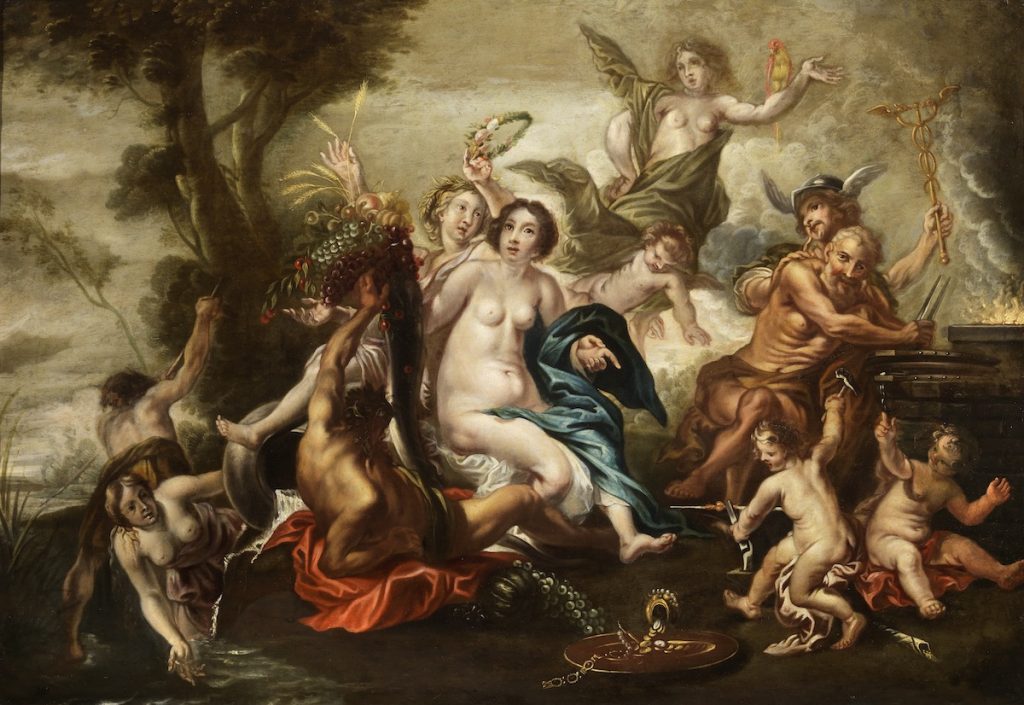CORNELIS SCHUT
Antwerp, 1597-1655
Allegory of the four elements
oil on copper, cm 76×110
The mastery skills of Rubens are unequivocally echoed by this painting on copper of exceptional dimensions, featuring a fascinating personification of the four elements: Ceres representing earth, Vulcan fire, Mercury air and the river – the man surrounded by nymphs who is reclining in the foreground – water. Traits that are typical of the Flemish master comprise the prosperous female nudes, the magniloquent language, the variegated complexions and the eventfulness, not to mention actual quotations as the figure of Mercury, very similar to the version which appears in the Judgment of Paris at the National Gallery in London. Apart from identifying the evident ties with Rubens by parallels as the aforementioned ones, Alessandro Nesi has retraced the work to Cornelis Schut, a follower and collaborator of the master from Antwerp. The scholar, who in his study on the work also mentions Schut’s youthful apprenticeships with Abraham Janssens and Daniel Seghers and the period spent by the artist in Rome between 1624 and 1627, observes that one knows of another work by the author with the same composition, which is “considered to be inspired by a dispersed prototype”, in the monograph on the Flemish painter and that Jan Popels has made an etching of it, accompanying it with a passage from Ovid’s Metamorphosis (XV, 239-244) placed below the image. Apart from the fact that some details of the latter differ, both with respect to the known specimen and our work on copper, it is a mirror image of them and must therefore be considered not so much as their source of inspiration as a work inspired by them.


